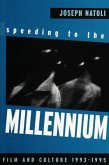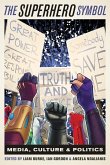A study of the "returned gaze" from the cinema screen, demonstrating that the films that we watch watch us, guide us, control our gaze, and enforce societal codes This book is a study of one of the most insidious and pervasive phenomena in the study and reception of cinema: the "returned gaze" from the screen, in which the audience is actually surveilled by the film being projected on the screen. Rather than the usual process of watching a film, in those films which return the gaze of the viewer, the film looks at us, confronting our voyeur's embrace of the spectacle it presents. The book cites examples as diverse as Andy Warhol's Vinyl, Laurel and Hardy two-reel comedies, the films of Jean-Marie Straub, Jean-Luc Godard, Roberto Rossellini, and Wesley E. Barry's Creation of the Humanoids. It also discusses the history of the returned gaze in video, pornography, surveillance systems, and the related plastic arts.
Hinweis: Dieser Artikel kann nur an eine deutsche Lieferadresse ausgeliefert werden.
Hinweis: Dieser Artikel kann nur an eine deutsche Lieferadresse ausgeliefert werden.








